- What is content marketing?
- Why do online brands love content marketing?
- How does content marketing work?
- Best content marketing methods in 2025
- AI vs. normal content marketing: Which one to choose
- Case Studies: 3 best content marketing examples
- 6 tips to design a great content marketing strategy
- Content marketing tools you need to scale your efforts
- Manage end-to-end content marketing and campaign management with Sprinklr
What is content marketing?
Content marketing is the craft of creating and sharing content like articles, videos, emails and social media posts that are both relevant and valuable to your current and potential customers. This approach showcases your expertise and demonstrates that your company values its customers beyond just sales transactions.
It involves a strategic process of planning, creating and distributing this content across various platforms such as social media, blogs, and podcasts with the aim to not only capture the attention of your target audience but also to foster brand loyalty, engagement and awareness.
Why do online brands love content marketing?
Build trust: Sharing helpful and insightful content establishes a brand as an expert in its field, making customers more likely to trust and choose it over competitors.
Enhance engagement: Creative and engaging content attracts more audience interaction, keeping the brand relevant and top-of-mind for consumers.
Boost SEO: Regularly publishing fresh content improves search engine rankings, making it easier for potential customers to find the brand online.
Improve authority: Developing quality content positions a brand as a thought leader in its industry, enhancing its reputation and authority on specific topics.
Need inspiration?
Brands like Citibank and Subway are always at the forefront of social thought leadership. Take Subway’s Beyond Meatball Sub campaign for instance.
It launched this campaign, introducing meat-free options in various U.S. cities. This innovative move not only catered to vegetarians and vegans but also appealed to traditional meat-eaters, showcasing its commitment to inclusivity and dietary diversity. The campaign's success highlighted Subway's ability to connect with a broader audience by offering plant-based alternatives, reinforcing its position as a forward-thinking brand in the fast-food industry.
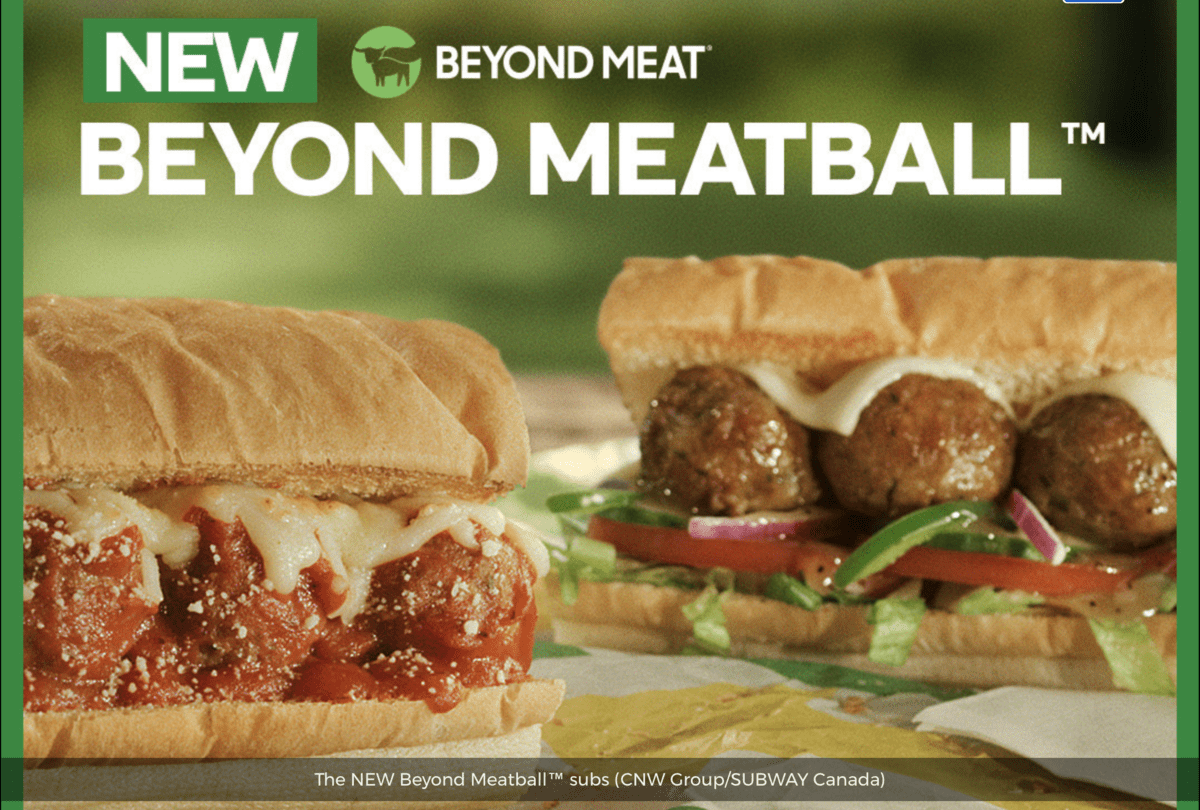
Need more examples? Go to 7 Inspirational Social Media Campaign Examples
How does content marketing work?
Content marketing works by offering valuable, relevant content to a target audience with the goal of attracting, engaging, and retaining customers. This approach focuses on building a relationship with potential customers by providing them with information that addresses their needs and interests, without overtly selling a product or service. Over time, this strategy helps in nurturing a loyal customer base that trusts your brand and considers it a go-to source for information and solutions.
The 5 pillars of content marketing
Content marketing stands on several key pillars that ensure its effectiveness and success:
1. Content strategy: The planning phase where goals are set and content is tailored to meet the needs of the target audience. Elements include:
Audience research: Understanding the demographics, preferences, and pain points of your target audience.
Content calendar: A schedule that outlines when and where content will be published to ensure consistency.
💡 Pro Tip: You can use Sprinklr’s Content Calendar that outlines upcoming posts along with the specific dates and times for publishing them for all your social media channels.
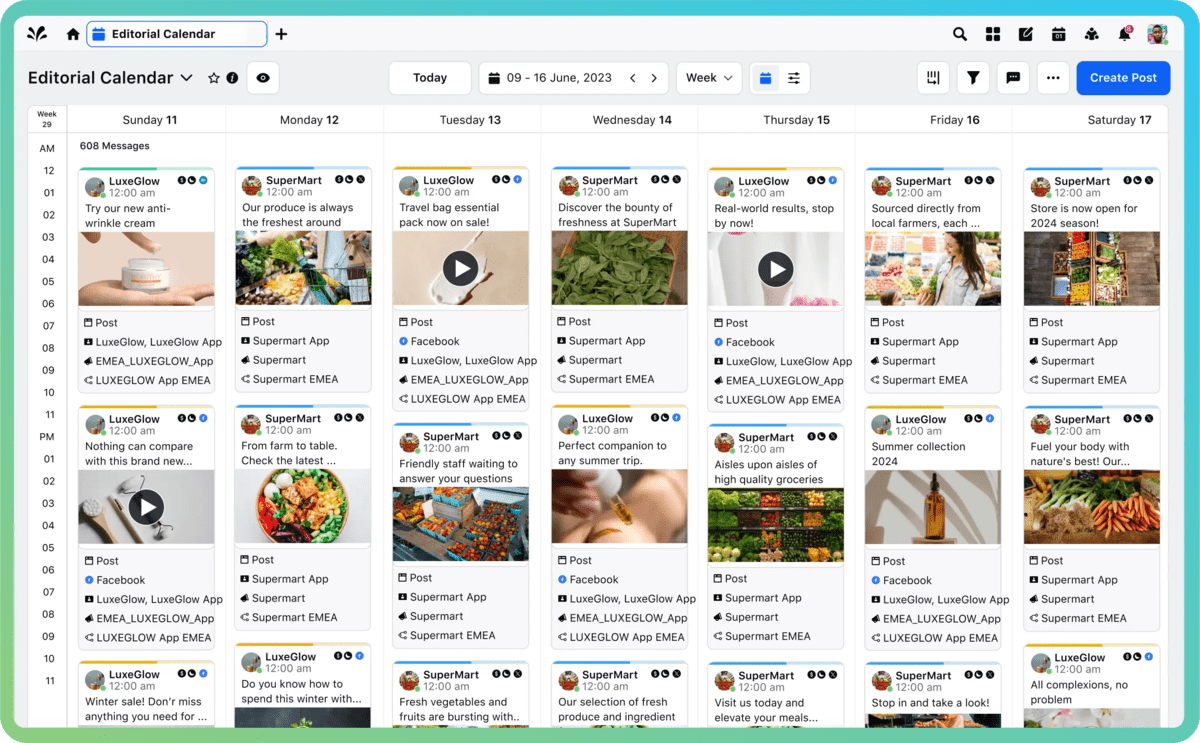
2. Content creation: The process of producing engaging and valuable content for the audience. Elements include:
Blog posts: These are a key element, particularly for business-to-business (B2B) communication, thanks to their search engine optimization (SEO) benefits. You can find blogs ranging from short 500-word updates to deep-dive 4000-word articles, making them versatile tools for attracting those at the early stages of engaging with your brand.
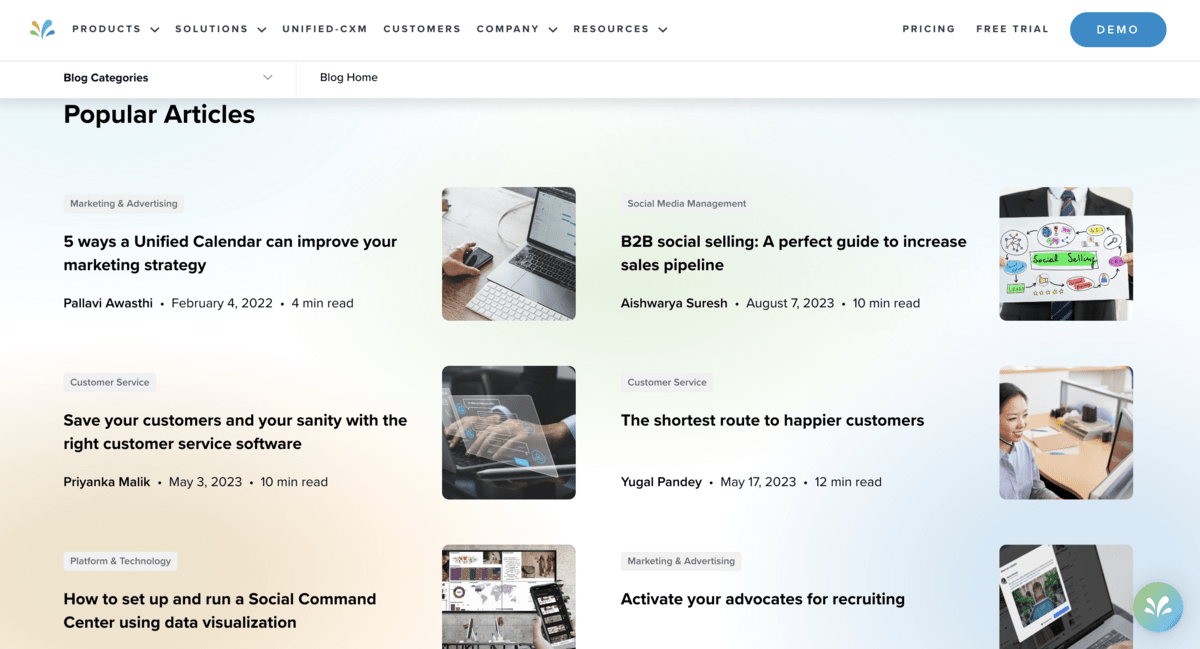
Videos: With the growing trend of video marketing, businesses are creating a variety of video content, such as quick how-tos, behind-the-scenes peeks, brand stories, product reviews, and event highlights. Plus, with options like webinars and live streams, you can engage your audience in real-time or on their schedule.
Watch how Sprinklr engages its audience with how-to videos. 👇
Infographics: These are visually engaging tools that combine text, data and graphics to make complex information easy to digest. They're perfect for highlighting comparisons, summarizing information, illustrating trends or explaining processes in a clear, visual manner.
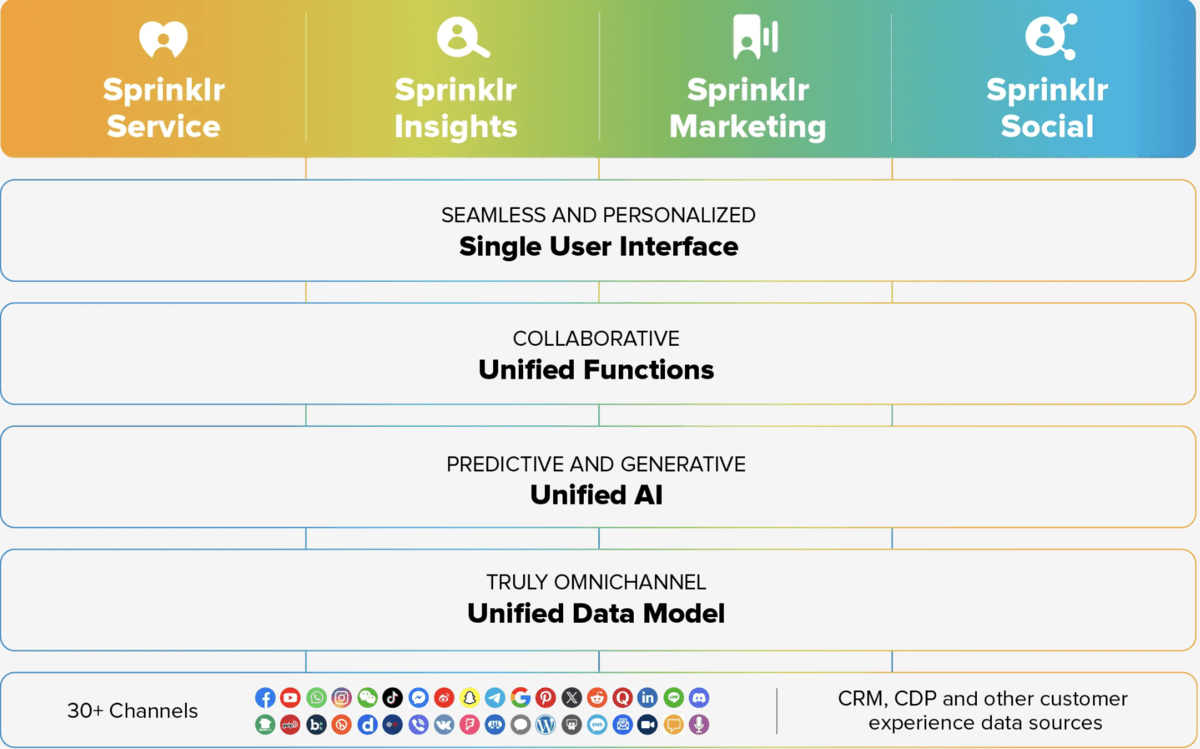
Gated content: This type of content, which includes e-books, whitepapers, case studies and webinars, requires the audience to provide their contact information before accessing. It's a strategic approach in B2B marketing for lead generation and qualification.

Podcasts: These audio programs allow audiences to consume content conveniently, whether on the go or during their downtime. With the rise of streaming and podcast platforms, it's easier than ever for marketers to reach folks who prefer listening over reading or watching.
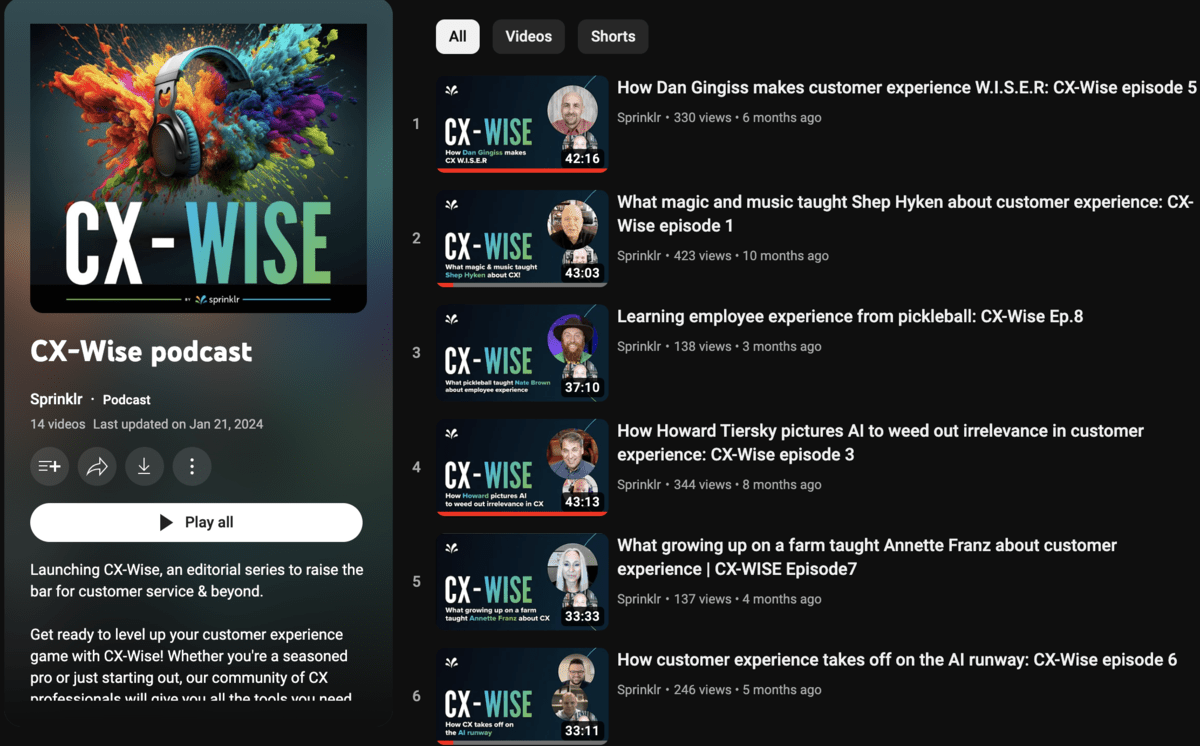
3. Content distribution: Once content is created, it needs to be shared across various channels where your target audience spends their time.
Elements include:
Owned media: This includes all the channels over which your organization has full control:
Website: Acts as the central hub for your content, establishing your brand's voice and providing valuable information to your audience, from detailed articles to company news.
Mobile app: An extension of your digital presence, useful for sharing content snippets and providing value to your audience on the move.
Forum: A space for community interaction, where you can host discussions, address FAQs and engage with industry experts on relevant topics.
Earned and shared media: This includes the coverage or sharing of your content by external parties without direct payment:
Guest blogging: Expands your reach and establishes thought leadership by featuring your expertise on other reputable sites.
Brand collaborations: Partnering with complementary B2B brands to co-create content like an e-book, research, conference or webinar, using each other's customer bases for broader reach.
Email marketing: A tool for directly engaging your audience by delivering personalized content, newsletters, updates and promotions right to their inbox.
Social media: Sharing content on platforms like Facebook, X and LinkedIn to share content and engage with your community.
Paid media: This includes advertising channels where you pay to showcase your content.
Search engine marketing (SEM): Paying for your website to appear at the top of search engine results for specific keywords.
Display advertising: Buying ad space on websites to promote your content through banners and other ad formats.
Social media advertising: Using targeted ads on social media platforms to reach specific audience segments based on demographics, interests, and behaviors.
Native advertising: Ads that blend in with the content around them on a website or platform, looking more like part of the site than an obvious ad. Often, you'll see these as "Recommended Content" on websites.
Influencer marketing: Collaborating with influencers in your field to promote your content on their social media accounts.
✅Good to know: If you deal with multiple influencers, consider an automated platform for end-to-end management of influencer campaigns for added efficiency. An influencer marketing platform for example, helps brands with hiring, onboarding, managing, and analyzing influencers from one window. This way, your influencer content is always on-brand and consistent, which goes a long way in fostering audience trust.
4. Content optimization: Continuously improving content based on performance and audience feedback. Elements include:
A/B testing: Comparing two versions of content to see which performs better.
SEO updates: Regularly updating content to maintain or improve search engine rankings.
5. Analytics and measurement: Analyzing the performance of your content to understand its impact and refine strategies. Elements include:
Analytics tools: Tracking website traffic, user behavior, and conversion rates using tools like Google Analytics and Sprinklr.
Social media analytics: Monitoring engagement rates (likes, shares, comments) and audience growth on social platforms.
Deep Dive: Social Media Analytics Tracking: How It’s Done
Best content marketing methods in 2025
In 2024, the landscape of content marketing will continue to evolve, with certain channels standing out due to their effectiveness and innovative engagement opportunities. Here are some of the best content marketing methods you can use:
Interactive webinars
Webinars have become a mainstay for deep engagement, especially when interactive elements are included. The ability to directly engage with the audience in real-time, offering Q&A sessions, polls, and interactive discussions, makes webinars a highly effective tool for education and conversion.
Podcast series
Podcasts have surged in popularity; thanks to their convenience and the personal touch they offer. They allow brands to dive deep into subjects, building a narrative over series and establishing a strong, loyal listener base through regular episodes. The intimate nature of audio content helps in creating a personal connection with the audience.
AI-enhanced personalized content
AI is not a threat to content marketers, but rather a powerful tool that can help you create better content faster and easier. AI algorithms analyze user data to deliver tailored content recommendations, making each interaction unique and significantly increasing engagement rates.
AI tools can be used to assist you in tasks such as research, writing, editing, designing, and optimizing your content for different formats and platforms, as well as to generate new ideas and insights based on data analysis.
Take Sprinklr AI+ for instance. Simply input a topic, phrase, or keyword, and the Generative AI-enriched platform starts crafting compelling posts, reels, and more. Plus, it ensures your content is flawless with the integrated proofreading tools for grammar, spelling, and style. Sounds unbelievable? Check its demo here.
Editor’s Pick: 10 AI Writing Prompts in Content Marketing [2025]
Short-form video content
Platforms like TikTok and Instagram Reels have highlighted the power of short-form video content. These platforms offer a creative and dynamic way to present information, tell stories, and engage users with content that is easy to consume and share, making them ideal for capturing the attention of a broader audience.
SEO-driven long-form articles
Despite the rise of new formats, long-form content remains crucial for in-depth exploration of topics and SEO benefits. Detailed articles that provide comprehensive insights, backed by research and data, continue to attract organic traffic, establish authority, and support the audience at various stages of the customer journey.
AI vs. normal content marketing: Which one to choose
Traditional content marketing relies on human creativity and insight to produce and distribute content. It's grounded in understanding audience needs, crafting compelling narratives and manually analyzing performance to refine strategies. This approach excels in creating deeply resonant, emotionally engaging content that reflects brand values and human experiences. However, it can be time-consuming and may lack the precision of data-driven insights in targeting and personalization.
AI-driven content marketing, on the other hand, uses machine learning and data analytics to optimize social media content creation, distribution, and personalization at scale. AI tools can analyze vast amounts of data to identify trends, predict user behavior, and automate content personalization, making the content more relevant to individual users. While AI enhances efficiency and relevance, it may not always capture the nuanced, creative storytelling that human content creators can achieve.
To leverage the best of both worlds, consider the following strategies at different stages of the marketing funnel:
👀 Awareness stage (getting noticed):
At this initial phase, your content, like informative blog posts and engaging infographics, serves as an introduction to your brand, aiming to capture interest and build awareness.
AI tools help identify trending topics and optimize content for search engines, ensuring your content reaches a wider audience looking for information in your industry.
🤔 Consideration stage (learn more):
Here, you delve deeper with content such as detailed guides and webinars, showcasing your expertise and how your solutions address specific needs or challenges.
AI personalizes the user experience by recommending specific articles or videos to your visitors based on what they've liked before, making the consideration process more relevant and engaging.
✅ Decision stage (making choices):
This is where you create persuasive content like product demos, customer testimonials and comparison charts that assist in making the final purchasing decision, emphasizing the unique value proposition of your offerings.
Use AI to analyze conversion data and identify the most effective content types and messages that lead to a purchase, optimizing content delivery to nudge potential buyers toward making a decision.
🤝 Retention stage (loyalty stage):
Develop content that adds post-purchase value, such as user guides, FAQs, and community forums, to support and engage existing customers, encouraging customer loyalty and brand advocacy.
Use AI to track customer engagement and satisfaction, delivering personalized content, such as tailored recommendations, updates, and loyalty rewards, to keep your brand top-of-mind and foster repeat business.
How Planet Fitness uses AI to scale social presence across all touchpoints
Planet Fitness faced the challenge of personalizing customer interactions on all its social media channels across its 2400 locations.
Sprinklr's AI+ enabled it to tailor response length and wording based on context and modify tone for more personalized experiences. This resulted in enhanced customer engagement and satisfaction with quick response time on volatile social media channels.
For more on its approach and outcomes with Sprinklr, read the full story here.
Case Studies: 3 best content marketing examples
Successful content marketing strategies can significantly elevate a brand's presence and engagement with its target audience. Here are three illuminating examples that showcase effective content marketing across different platforms and scenarios:
1. Marvel origins: A map infographic that went viral
Movoto Real Estate tapped into the global fascination with Marvel Comics superheroes like Spider-Man and Iron Man. They designed an intriguing map infographic detailing the birthplaces of these iconic characters, blending real estate insight with pop culture. The "Mapping Marvel Origins" campaign not only highlighted Movoto's real estate expertise but also struck a chord with comic book enthusiasts worldwide.
This infographic became a viral sensation, amassing over 9,000 social media shares and earning 365 features in leading outlets such as Yahoo and MTV. It was a strategic move that significantly enhanced Movoto's industry authority and online visibility, driving noteworthy traffic and leads to their site.
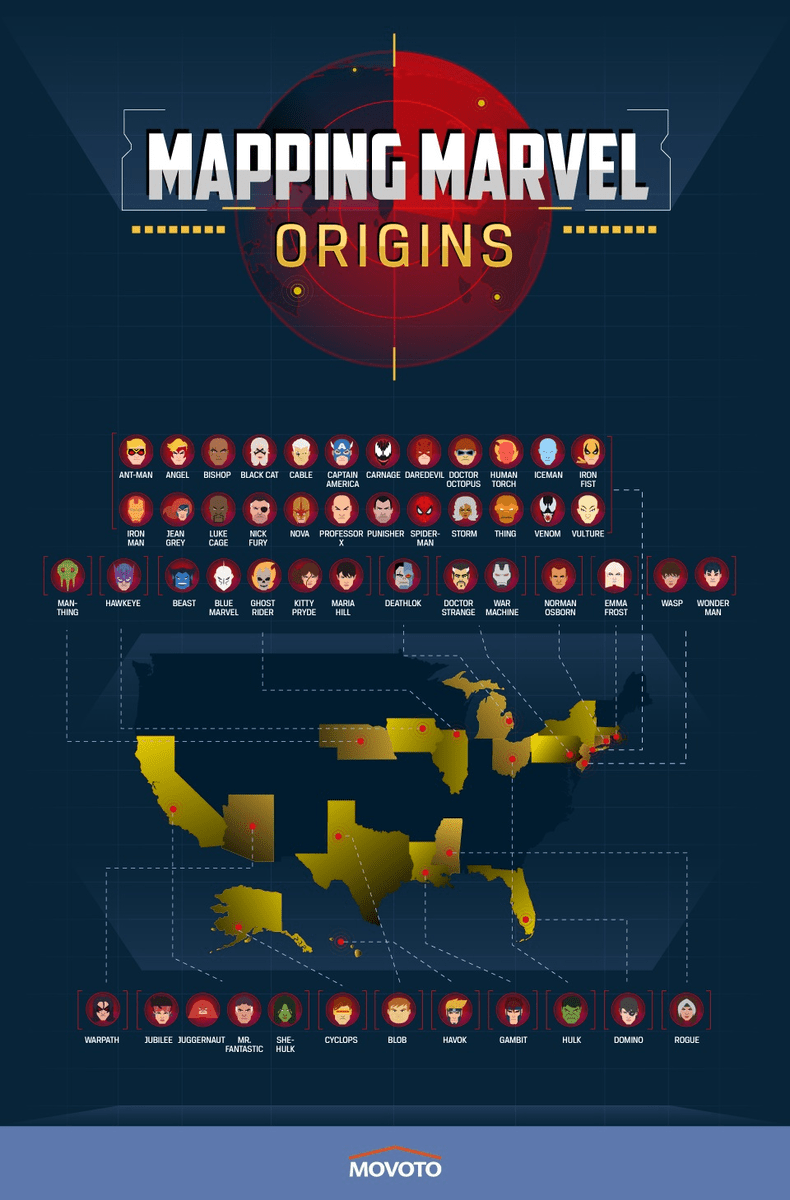
✅Your takeaway? Creative visuals that merge industry-specific knowledge with widespread cultural interests can lead to high engagement and virality, amplifying your brand authority and reach.
2. BuzzStream: A comprehensive guide that ranked on Google
BuzzStream sought to bolster its standing in the SEO industry. The strategy centered around producing original, research-based content to assert BuzzStream as a thought leader. This included evergreen content to boost search engine visibility and gated content to nurture ongoing audience relationships.
The outcome was remarkable, with 19 campaigns yielding 320 featured stories and nearly 66,000 social shares, alongside a record-breaking increase in new sign-ups.
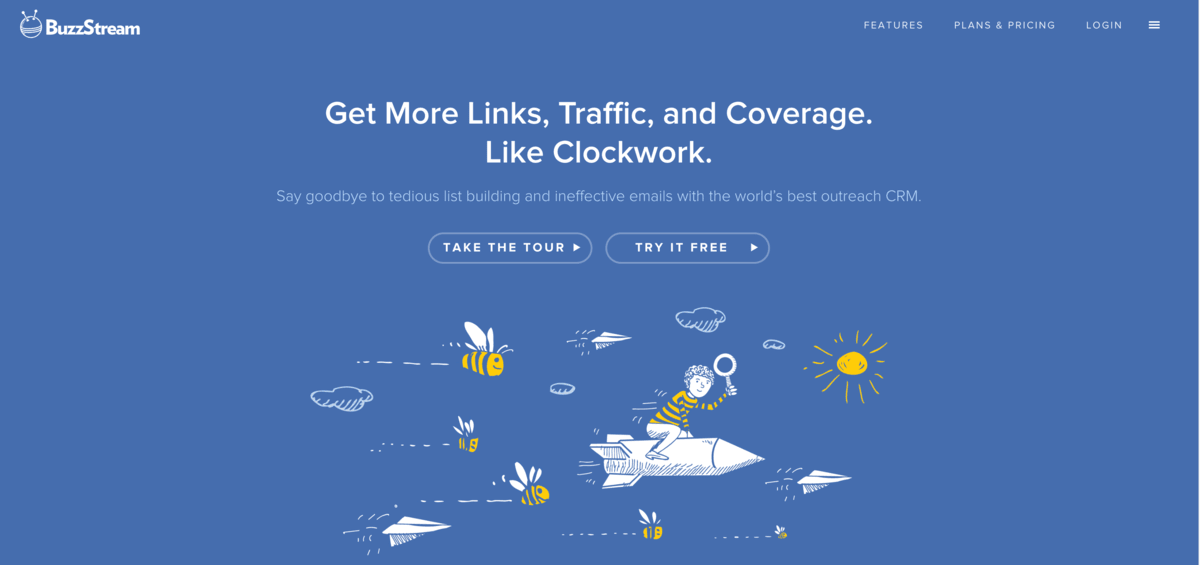
✅ Your takeaway? Original research and evergreen content can significantly enhance your brand's authority and visibility in its niche, leading to improved engagement and conversions.
3. Spotify: A personalized playlist that delighted users
Spotify's Wrapped series exemplifies innovative content marketing by personalizing user experiences. This annual feature compiles a playlist reflecting each user's listening habits over the year, including favorite artists, songs and genres, along with unique social listening insights. Encouraging users to share their Wrapped playlists on social media with vibrant graphics and hashtags has led to a viral phenomenon, boosting Spotify's brand awareness and user engagement.
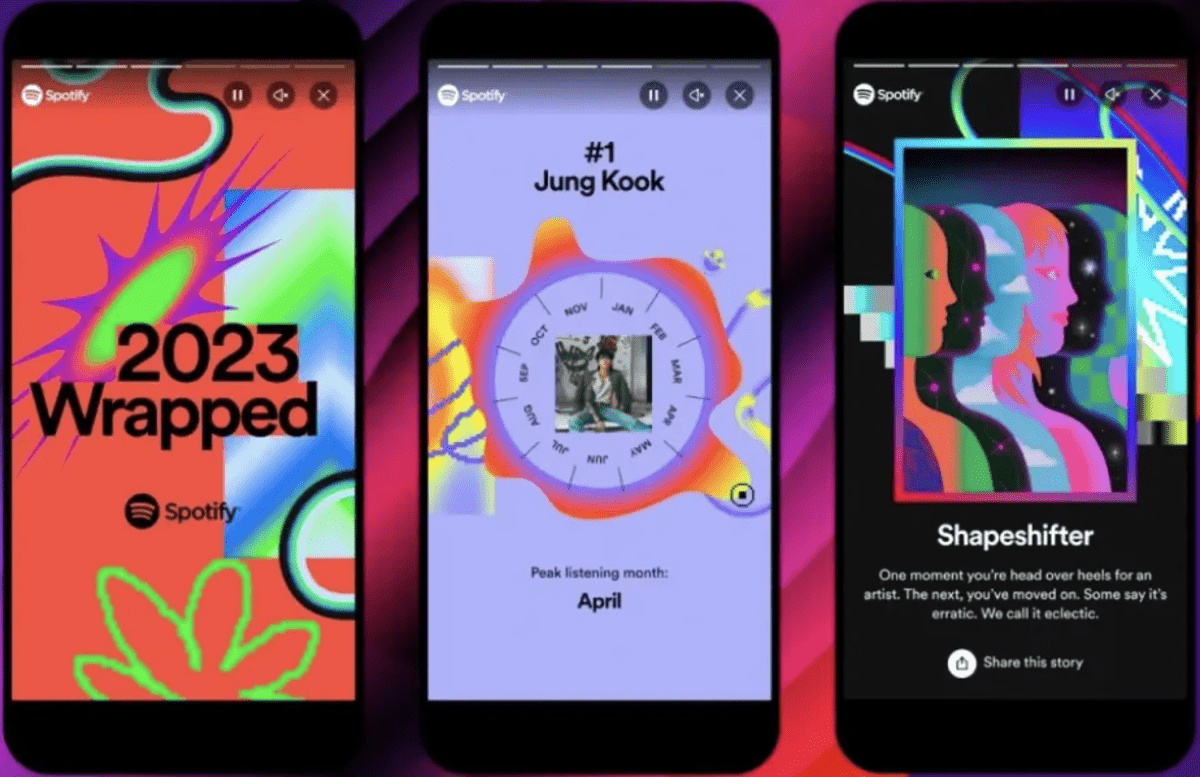
✅ Your takeaway? Personalized content, powered by data analytics and social media integration, can create deeply engaging experiences that foster brand loyalty and viral marketing opportunities. The common elements that make these content marketing examples successful are:
Providing value and solutions to the target audience
Using creative and engaging visuals and formats
Using data and insights to create relevant and interesting content
Optimizing the content for SEO and social media
Measuring and analyzing the content performance and impact
6 tips to design a great content marketing strategy
Designing an effective content marketing strategy requires careful planning, creativity, and a deep understanding of your audience. Here are some tips to guide you in crafting a strategy that resonates with your audience and achieves your business goals:
1. Define your goal and objectives: You need to have a clear and measurable goal that guides your content strategy and aligns with your business strategy and vision. For example, your goal could be to increase your website traffic by 50% in six months or to generate 100 new leads per month from your blog.
Explore More: How to Set Social Media Goals for Your Business
2. Develop your brand story: You need to have a compelling brand story that showcases your unique value proposition, mission, vision and values, and connects with your audience on an emotional level.
3. Identify key platforms: You need to find out where your audience is searching for and consuming content and what types of content they prefer and choose the best platforms and formats for your content. For example, you can use Sprinklr AI+ to enhance your keyword generation with smart suggestion options.
4. Establish a content calendar: You need to have a content calendar that outlines your content plan and schedule, and helps you create and publish content consistently and efficiently. For example, you can use Sprinklr’s content calendar to organize your content projects and workflows.
5. Research topic ideas: You need to find out what topics and questions your audience is interested in, and what content is performing well in your niche, and generate topic ideas that provide value and solutions to your audience.
But how to do this? Try social listening! Discover what topics your audience is interested in, with the tool analyzing real-time data from across the digital landscape — uncovering trends and insights specific to your niche. This allows you to align your content with what your audience genuinely cares about. Start your journey towards truly resonant content with a free demo of Sprinklr Insights today
6. Optimize your content: You need to improve your content’s visibility and ranking on the search engines and increase your content’s reach and engagement on social media, by using keywords, titles, headings, meta tags, links, social media buttons, hashtags, captions and images.
Content marketing tools you need to scale your efforts
Scaling content marketing efforts requires not just creativity and strategic thinking but also the right set of tools to amplify reach and efficiency. Here are essential tools that can help you scale your content marketing activities successfully:
Content management systems (CMS): A robust CMS, such as WordPress or Drupal, is crucial for publishing, managing and optimizing your content. These systems offer flexibility, scalability and extensive plugin ecosystems to enhance your content strategy.
SEO and keyword research tools: Tools like SEMrush, Ahrefs or Moz provide invaluable insights into keyword research, competitor analysis and SEO optimization. They are essential for ensuring your content ranks well in search engine results and reaches your target audience.
Content creation and design tools: To produce high-quality, engaging content, tools like Canva, Adobe Creative Cloud or Visme are indispensable. They help create visually appealing graphics, videos and infographics that can boost engagement and shareability.
Email marketing platforms: Platforms such as Mailchimp, Constant Contact or Sendinblue allow marketers to segment audience, personalize messages and analyze the effectiveness of email campaigns. They are critical for nurturing leads and driving conversions.
Social media management tools: These enable marketers to schedule posts, analyze social media engagement and manage all social media accounts from a single dashboard. These tools are vital for maintaining an active and engaging presence on social media.
Check this list of 11 Best Social Media Management Tools to find your best fit.
Content analytics and performance tracking tools: Understanding how your content performs is key to scaling your efforts. Google Analytics, along with platforms like Sprinklr, provide detailed insights into content performance, audience behavior and ROI.
Further Reading: Social Media Analytics: A Simple Guide for Every Marketer
Project management and collaboration tools: Tools like Trello, Asana or Slack are essential for coordinating content creation processes, facilitating team collaboration and ensuring projects are completed on schedule.
AI-powered content optimization tools: AI tools like MarketMuse, Clearscope or Surfer SEO help optimize content for search engines and audience engagement by providing data-driven insights and recommendations.
8-point solutions! Sounds like a lot, right? A unified platform for content marketing and campaign management can simplify your life and cut marketing costs by up to 50%!
Manage end-to-end content marketing and campaign management with Sprinklr
Sprinklr provides a holistic approach to content marketing and campaign management, aiming to simplify and enhance the way you connect with your audience. It's about bringing everything under one roof — from the spark of an idea to the final analysis of a campaign's impact.
Here's what makes Sprinklr stand out:
Unified platform: Centralize all your content marketing efforts in one place, making collaboration smooth and keeping all your content efforts organized.
Data-driven insights: Leverage AI-powered analytics to understand audience preferences and content performance, helping you make informed decisions.
Scalable content creation: Effortlessly create, curate, and repurpose content across multiple channels, ensuring consistency and relevance.
Real-time engagement: Monitor and respond to audience interactions across platforms, making every interaction count.
To see how Sprinklr can transform your content marketing strategy and campaign management, consider exploring the platform demo.
Frequently Asked Questions
Thank you for contacting us.
A Sprinklr representative will be in touch with you shortly.
Contact us today, and we'll create a customized proposal that addresses your unique business needs.
Request a Demo
Welcome Back,
No need to fill out any forms — you're all set.


